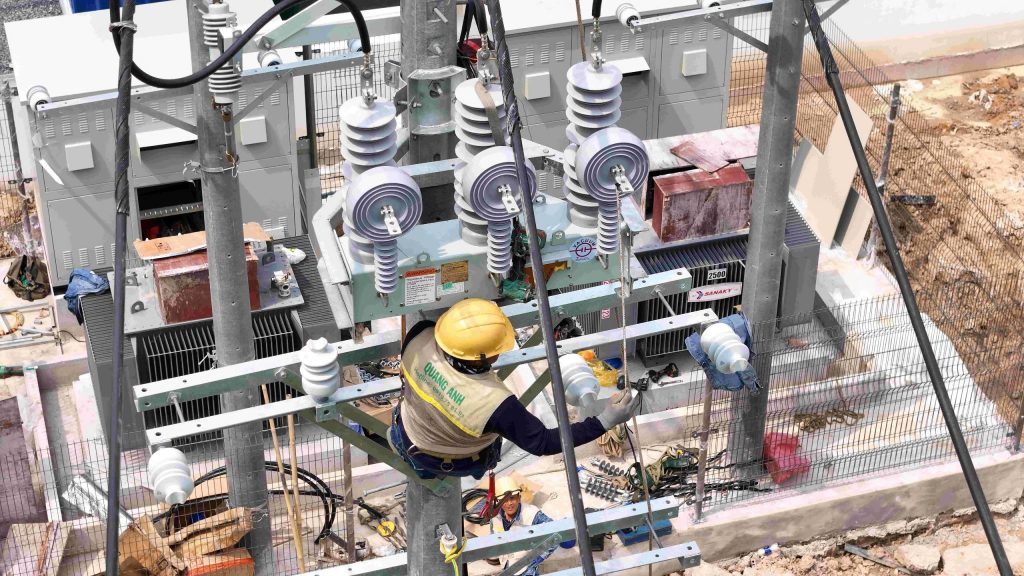News
Transformer Repair in Binh Duong: Maintaining Safety and Optimal Performance
Article Contents:
In Binh Duong, transformer repair plays a critical role in maintaining performance and ensuring the safety of electrical systems, serving industries.
Overview and Positioning of Transformers
Transformers’ overview inspection is the first step in the repair process in Binh Duong. The job includes observing mechanical and electrical signs, checking for discharge or moisture traces, positioning, and measuring oil levels. This ensures that the machine operates in safe and stable conditions while helping assess necessary repair procedures.
Transformer Inspection is an indispensable part of transformer maintenance. This ensures accurate positioning and maintains the performance and safety of the system.
- Overall External Inspection:
Carefully observe the transformer casing, radiators, and porcelain surfaces to detect any signs such as cracks, oil leaks, or potential explosion points. Ensure that all mechanical connections are in good condition with no signs of rust or tilting. - Oil Level and Quality Inspection:
Ensure the oil level in the transformer and voltage divider meets the requirements. Take oil samples to analyze moisture and acidity levels to ensure oil quality. - Transformer Insulation Inspection:
Measure the insulation resistance between the high voltage parts – the casing, high voltage – low voltage to ensure that the insulation is at the maximum safety level to prevent potential issues. - Electrical and Coil Parameters Measurement:
Detailed measurement of the inductance, capacitance of the coils, as well as current and voltage parameters to further optimize the transformer’s performance. - Regulator Function Inspection:
Ensure the regulator operates well, not stuck or loose in voltage conversion positions. - Regular Cleaning and Maintenance:
Perform cleaning of the insulators and transformer parts with specialized chemicals, while checking the condition of the welds and oil drain valves. - Safety and Installation Position Check:
Ensure that the transformer is placed in a safe location with anti-vibration mechanisms and that the entire grounding system functions efficiently to avoid electrical leakage situations.
Regular transformer maintenance with detailed inspection steps like these not only ensures that the equipment is always in optimal operating condition but also enhances safety and prolongs the device’s lifespan.

Testing and Cleaning Transformers
Voltage testing is an important step to assess the operating ability of transformers according to technical standards. Testing the breakdown voltage of oil samples, checking circuits, and evaluating operational performance ensures that transformers function well. Cleaning and repairing components such as cooling fans and insulators is also performed to avoid electrical failures.
In the electrical system maintenance process, testing and cleaning transformers are essential steps to ensure the equipment’s performance and durability. This article delves into the complex stages of these two processes to aid CEOs and technical directors in more effectively managing transformers.
Cleaning Transformers
- Safety First: Ensure to turn off the power, confirm that the transformer has stopped operating, and its surface is completely cool before cleaning.
- Remove Surface Dirt: Use a soft-bristle brush or vacuum cleaner to sweep away dirt. For stubborn stains, use light soapy water or specialized cleaning solution, ensuring water does not seep into the machine.
- Dry the Surface: After cleaning, use a clean cloth to wipe the surface dry to avoid leaving behind any water or chemical residues.
- Inspect Outer Shell and Connection Cables: Clean the outer shell, bushing, and inspect connection cables for any damage or explosion signs.
- Check Transformer Oil: For oil transformers, check the temperature and oil quality through periodic oil sample analysis to assess the condition and decide whether oil replacement is needed.
- Restart and Check: After completing cleaning, restart the transformer and observe its operating condition to detect any early errors.
Testing Transformers
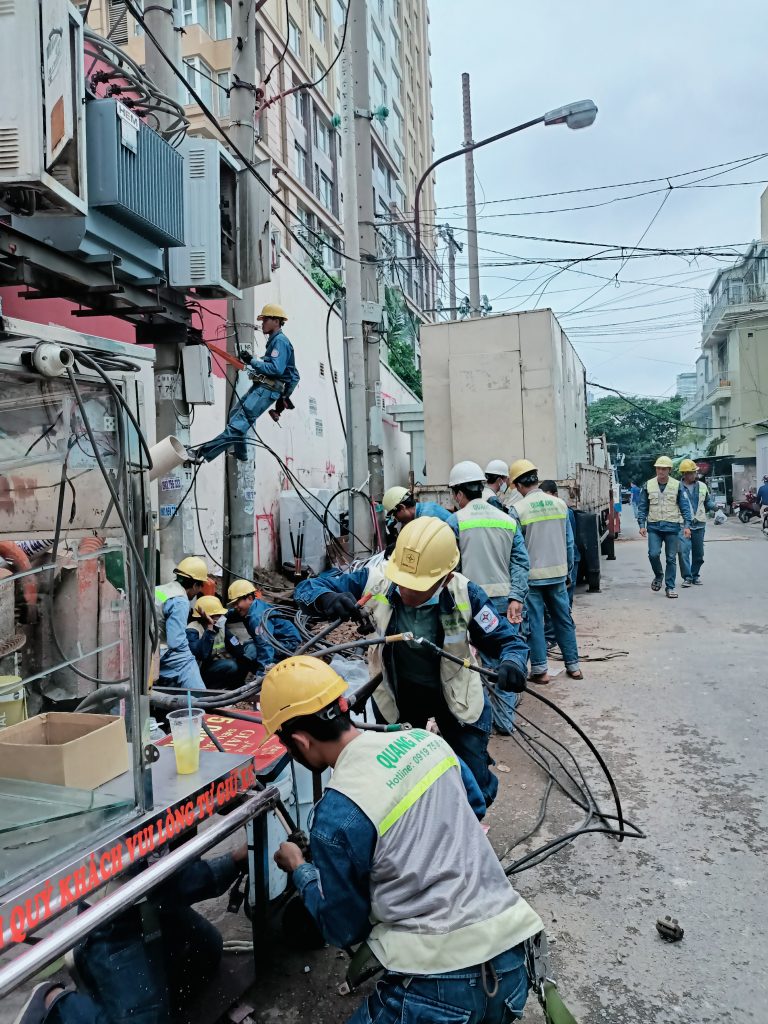
Testing transformers helps comprehensively assess the technical condition of the equipment through the following steps:
- Insulation Check: Measure the insulation resistance between high-voltage coil, low-voltage coil, and casing to determine insulation deterioration.
- Transformer Oil Analysis: Check acidity, moisture, and dissolved gases indicators to evaluate the oil’s degradation.
- Operating Temperature Check: Measure oil and core temperature to assess cooling ability.
- Load Testing: Although load testing information is not detailed, this helps evaluate performance and detect issues.
Important Notes
- Cleaning and testing should be performed by skilled technicians to ensure safety.
- Regular maintenance not only helps detect early problems but also extends the transformer’s lifespan.
- Additionally, check and tighten connections to avoid poor contact.
These processes not only help prevent damage and failures but also increase the transformer’s lifespan, ensuring stable operation of the electrical system.
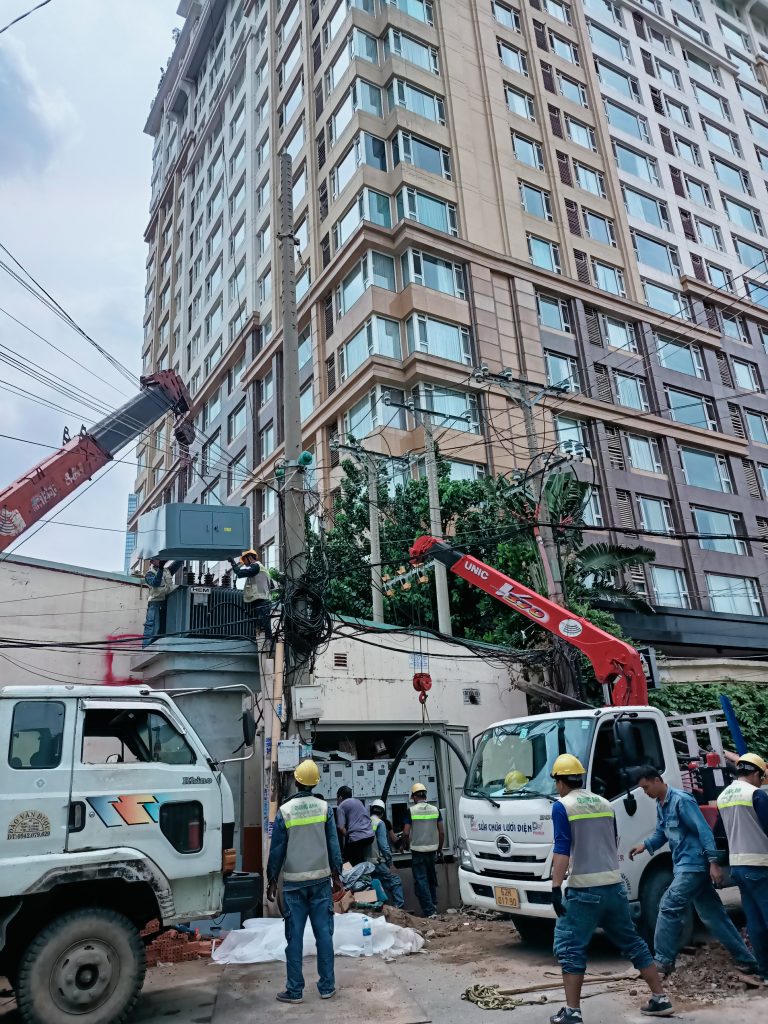
Technical Supervision and Consulting in Transformer Repair
Technical supervision ensures that all cable heads, busbars, and grounding systems are thoroughly checked to ensure transformer operational safety. Additionally, consulting and handling electrical issues are indispensable, helping minimize risks and maintain long-term system stability.
Transformer repair plays an essential role in enhancing the efficiency and lifespan of electrical systems. This process requires thorough supervision and precise technical advice to detect and address potential issues.
1. Technical Supervision of Transformers
- Goal: The primary goal of technical supervision is to collect and analyze operational condition information of transformers, including parameters such as voltage, current, temperature, and load. This ensures that the transformer operates stably and optimally.
- Supervision Methods:
- Online Monitoring: This method allows continuous monitoring of critical parameters such as cooling efficiency, temperature, and OLTC operation times. This information significantly supports assessing the overall health of the machine and scheduling appropriate maintenance.
- Daily Monitoring: This involves regularly checking data to adjust the machine’s load, avoiding over-capacity operation that causes damage.
- In-depth Measurements: These include insulation oil analysis and DGA measurements to detect early damage such as partial discharge and oil aging, thereby implementing timely repair strategies.
2. Technical Consulting in Transformer Repair
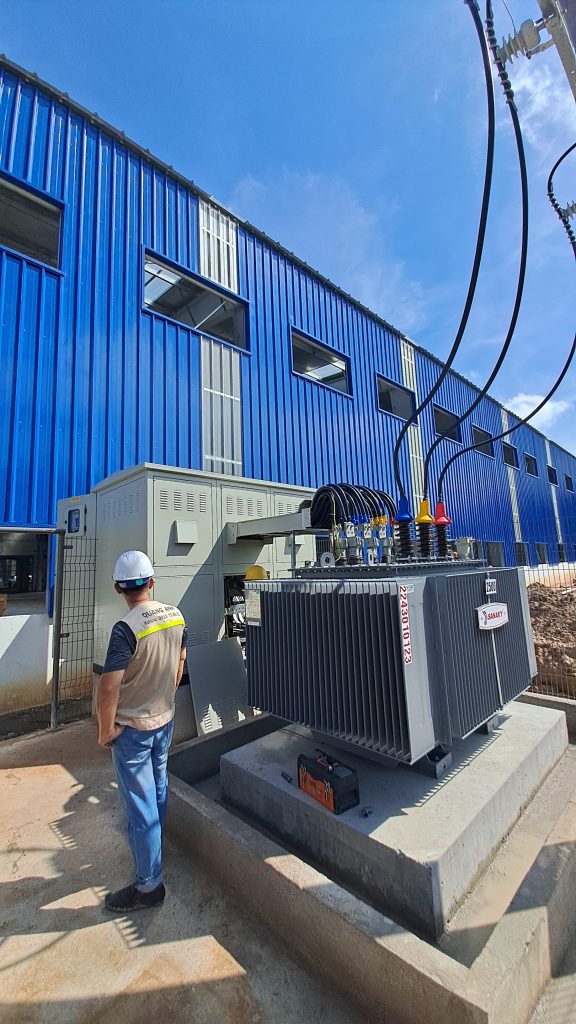
- Analysis of Supervision Data: Technical experts will analyze the data collected from online and offline monitoring to identify abnormalities such as overheating or OLTC errors to determine the cause and extent of damage.
- Damage Assessment: Technical consulting helps assess the impact of issues on the overall functioning of the transformer, including oil aging and cooling system problems.
- Repair and Maintenance Planning: Based on the severity of the damage, experts will schedule maintenance and adjust the various components of the transformer.
- Application of New Technology: Applying wireless monitoring technology and DGA gas analysis is part of the consulting strategy to increase efficiency and minimize transformer downtime.
3. Technical Parameters for Supervision and In-depth Consulting
| Parameter | Monitoring Significance | Related Technical Consulting |
|————————|——————————————-|——————————————-|
| Operating Temperature | Evaluate cooling efficiency, avoid overheating | Check cooling system, maintain fans or oil |
| OLTC Operation Times | Monitor mechanical durability of the selector | Plan OLTC maintenance, replace if necessary |
| Load and Overload | Determine machine usage level and overload | Adjust load or increase machine capacity, warn to limit damage |
| Insulating Oil Quality (DGA, moisture, acid) | Assess insulation health, detect partial discharge | Change or process oil, check insulation, repair oil tightness |
| Insulation Resistance | Determine insulation degradation | Test to evaluate coil or insulation surface damage |
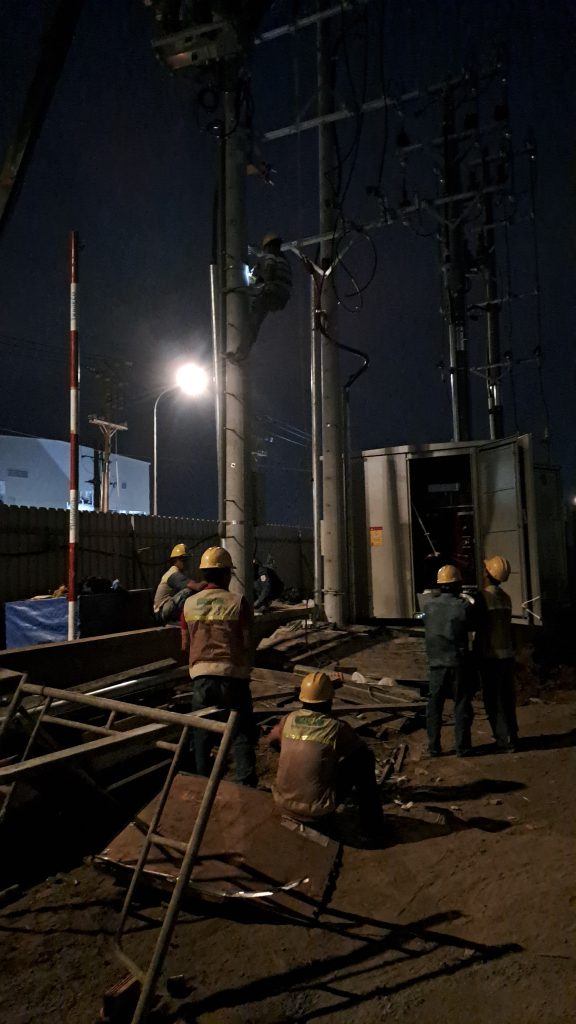
4. Tools and Technologies Applied
- Online Monitoring Systems: These devices collect and transmit data to the control center to monitor 24/7 and warn when indicators exceed safety thresholds.
- In-depth Measurement and Analysis Devices: Use devices like SFRA meters, DGA to support accurate analysis and repair advice.
Technical supervision and consulting in transformer repair not only optimize maintenance costs but also increase the system’s lifespan. Applying modern methods and technologies plays a key role in this work.

Repairing transformers in Binh Duong brings numerous outstanding benefits to maintaining the efficiency and safety of industrial electrical systems. Comprehensive inspection and rigorous testing processes, along with professional supervision, help protect the life of machines, reduce the risk of explosions.
For your substation to operate safely and at optimal performance, contact QuangAnhcons today via hotline: +84 9 1975 8191.
QuangAnhcons provides transformer repair services in Binh Duong with professional processes, modern machinery, and a team of experienced technicians, ensuring your electrical system is always stable and safe.

 Tiếng Việt
Tiếng Việt 简体中文
简体中文 Deutsch
Deutsch 日本語
日本語 한국어
한국어 ไทย
ไทย Русский
Русский Français
Français
